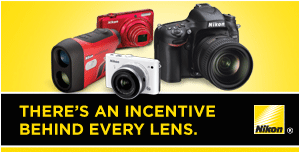Employee Recognition: Five Blunders (and Fixes)
By Curt Coffman and Kathie Sorensen, Senior Partners, The Coffman Organization
We’re all born with a need for recognition. Having someone else take notice of our activities and accomplishments is an instinct that cannot be turned off. Children love it when someone takes notice, and they want to keep repeating the behavior that has been positively recognized. As adults, we’re taught that our internal confidence and pride should be enough, but we never really outgrow that need to feel appreciated and valued for our contributions.
Seat Number 8
Once upon a time in a training session for a financial services company, a group of 20 salespeople were asked to look under their chairs for their seat number. The seminar leader asked the individuals with seat numbers 2, 5, and 8 to accompany him to another room, where she presented each seat-holder with a unique but contradictory point of view. Their challenge was to convince their peers of their particular viewpoint.
Meanwhile, back in the seminar room, the remaining salespeople were instructed to: a) agree with everything presented by the salesperson in seat number 2; b) disagree with everything presented by the salesperson in seat number 5; and c) completely ignore the salesperson in seat number 8.
Predictably, the salesperson in seat number 2 was elated with the audience’s approval and kept adding to his argument. In the face of audience disagreement, the salesperson in seat number 5 became more persistent, getting louder and more focused on her selling points.
What happened to the salesperson in seat number 8? No matter what he said, the audience didn’t respond. Frustrated and devastated, the young man left the room nearly in tears.
The moral: Even negative recognition is better than being overlooked or ignored!
Emotional Compensation
We want to please those around us, but when our contributions go unnoticed we begin to lose the spirit and drive to excel. By making an intentional and sincere effort to celebrate accomplishments and successes, an “emotional compensation” is built and trust is established.
Effective recognition tells us that we’re making a difference. Unfortunately, many recognition programs have fallen short of their desired outcome. Here are some examples of where they go wrong and how to fix them:
- Blunder: Employee of the Month. This quickly becomes a game of “Whose turn is it next?” thereby minimizing excellent performance. Check out a company plaque sometime and note how often certain employees receive multiple commendations. Fix: Immediate Praise. Give praise in real time, as close to the observation as possible. Employees are often blind to their own excellence. Providing a specific description for them creates an awareness, which leads to even greater performance.
- Blunder: Asking Employees How They Want to be Recognized. Asking employees their preferred form of recognition will typically elicit a socially acceptable response, such as “I really don’t need anything more than a quick thanks.” People rarely acknowledge their need for recognition, let alone their honest desires for how they wish to be recognized. Fix: Ask Employees about the Best Recognition They’ve Ever Received. This will provide you with a much more accurate understanding of what the individual truly craves. While some employees will initially deny their needs, one of the first things cited by an unhappy employee is “no one seems to even notice what I do.”
- Blunder: Use of General Statements. Never use “way to go,” “I appreciate your contributions,” “thanks for all you do here” and the like. Platitudes such as these feel good for about 30 minutes, after which time the employee is no more aware of her talents than before. Fix: Specifically Describe Why the Recognition is Warranted. Employees want to hear exactly what they did that made a difference. It drives them to even greater levels of performance by helping them understand how their contribution really matters to others.
- Blunder: Insincere Compliments. Sometimes managers use recognition as a platform to let others know they’re in charge. Manipulation such as this isn’t easily disguised and will most definitely lead to a lack of trust between managers and employees. Fix: Real and Authentic Comments. Everyone shows glimpses of excellence at work at one time or another. Look for those moments in your employees and share what you’ve witnessed. This type of authentic recognition will create loyalty and generate extraordinary performance.
- Blunder: Only Recognizing ‘Following the Steps.’ Excellence is rarely achieved by simply meeting the requirements and/or following the prescribed plan. When conformity becomes the desired result, employees understand that doing is more important that thinking. Fix: Focus on Employees’ Ability to Exceed Expected Outcomes. Rather than legislating the steps that must be followed, keep the focus on the purpose of the role. By doing so you’ll unleash employees’ creativity, leading to greater effectiveness and efficiency.
New York Times bestselling author Curt Coffman and Dr. Kathleen Sorensen currently serve as a Senior Partners of The Coffman Organization. Their latest book “Culture Eats Strategy for Lunch” is due out soon. For more information on The Coffman Organization, go to http://coffmanorganization.com
Subscription Center
Subscribe to Engagement Strategies Magazine
Update Your Subscriptions





.jpg)

Comments
Show: Newest | Oldest
Post a Comment